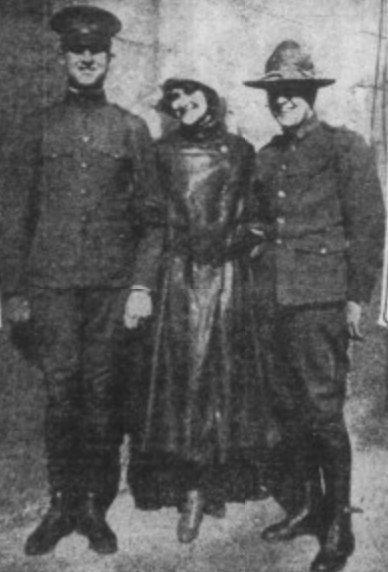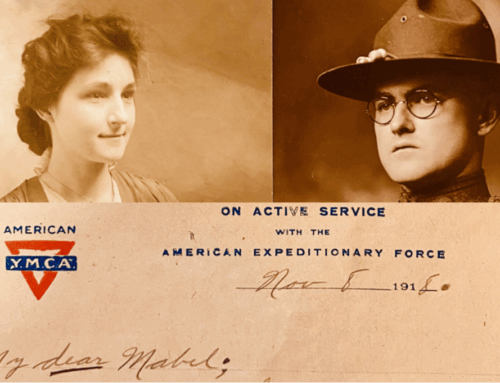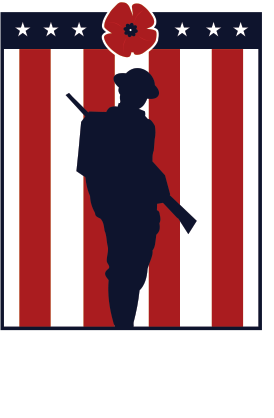“The young grow old quickly here”: Ruth Charlotte Bush, YMCA entertainer.
Published: 27 October 2025
By Elizabeth Foxwell
via the American Women in World War I website

ruthcharlottebush-1918
Ruth Charlotte Bush, ca. 1918.
Ruth Charlotte Bush was born in February 1894 to Civil War veteran Theodore Bush and his wife, Charlotte Ann Arney Bush, in Kentland, IN. She had three sisters—Adah, Marie, and Alice—and writer George Ade was a cousin. After she graduated from Shortridge High School, she studied at the Bush Temple of Music in Chicago and with the voice teachers Max and Carrie Leckner. She appeared in recitals and productions such as Speed (1915; see below).
As Kathy Snow and Beth Bassett in the summer 2018 Newcomer (published by the Newton County [IN] Historical Society) note, some of the Bush sisters joined the YMCA during World War I, albeit in different roles. Adah—the future secretary of Warren McCray, the governor of Indiana—worked in the Paris office that served as liaison between the YMCA and the army. Alice, also in Paris, served as secretary to a supervisor of YMCA transportation. Ruth sailed for France in February 1918 for 16 months of singing for servicemen in Belgian, French, and German locations, including Black troops, but mostly performing for those in the Rainbow Division. Such was her determination to reach the troops that her dressing area was a bunch of blankets held up by obliging servicemen (South Bend [IN] News-Times, 10 Jul. 1923) and once she rode on the handlebars of a bicycle for three miles when she needed to reach a grievously wounded friend and there was no other form of transportation available (Indianapolis News, 2 Jul. 1923). Usually, however, as described in the 11 May 1918 Indianapolis News, she rode in a Ford truck with her fellow entertainers, their luggage, and a piano, and the songs she mentioned that she performed were “Mother Machree,” “Annie Laurie,” and “Long Boy.” This issue also included excerpts from her letters. She wrote:
I sang on the stage of an open casino facing the sea. Before me stood row on row of hospital beds from which loomed faces uplifted. Eyes shone and there were smiles, smiles—how God can put smiles there amid so much suffering is a miracle I can not understand. So I, too, had to smile although my heart was breaking.
Far down the hill I saw a little lad. He was suffering with a frightful abdominal wound that makes him cry most of the time. But when I looked down at him he was smiling and he did not miss a word of my song. He … then said something to the nurse that sounded like “Gee, I almost forgot my pain.” An old man who had just lost a leg asked to be carried out that he might see and hear and they did it. The young grow old quickly here. Nearby was a young Canadian soldier, terribly wounded, but, oh, how he could smile out of that wondrous soul of his. Isn’t just one of those smiles worth coming 3,000 miles to see?

Ruth Charlotte Bush, center, with her future husband, Don Weber (left), and an Indiana friend, James Keenan (Indianapolis News, 11 May 1918)
The 5 Oct. 1918 Indianapolis News recounted that an artilleryman handed Ruth a gas shell—intended for firing at the enemy—and “asked her if she wished to send a message” to the Germans. “She wrote: ‘Indiana says hell-o.’”
Ruth returned to the United States with her sisters in June 1919. She visited servicemen in hospitals and helped to found the Indiana chapter of the Women’s Overseas Service League, especially concerned for women who had served in the war and had become disabled. This echoed her own situation, as Snow and Bassett discuss, for she developed a serious case of “trench mouth” (gum disease) and pulmonary issues. She married Purdue alum Don Weber in February 1923 and died on 1 July 1923, with the 2 July 1923 Indianapolis News stating her death was due to “exposure to German gas attacks” during her service abroad (1). Veterans from the Rainbow Division served as pallbearers. Her widower eventually married her sister Marie.
Ruth wrote in 1918, “…I wouldn’t have missed these experiences for anything any one could offer me. I know that when all is over I shall be a better, stronger, truer girl than I should have been without it” (Indianapolis News, 11 May 1918).
There are many types of casualties other than military.
Read the entire article on the American Women in World War I website.
External Web Site Notice: This page contains information directly presented from an external source. The terms and conditions of this page may not be the same as those of this website. Click here to read the full disclaimer notice for external web sites. Thank you.



